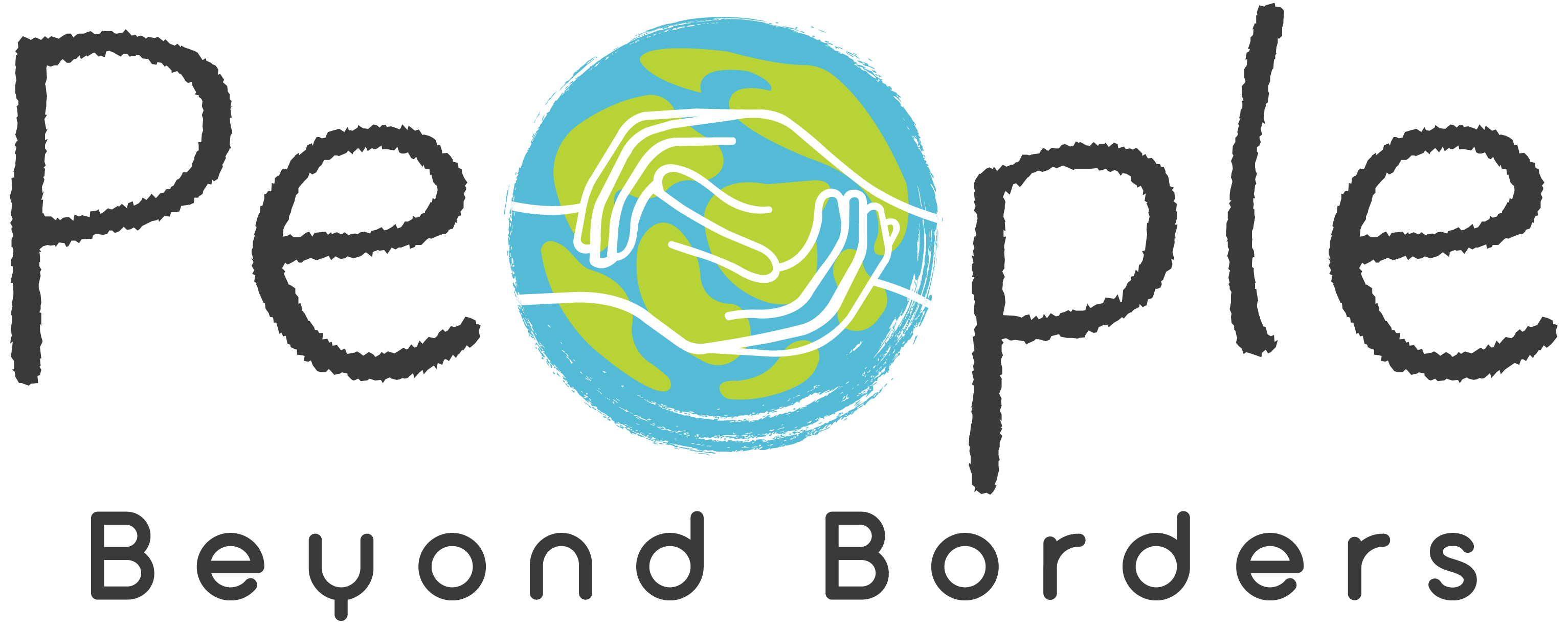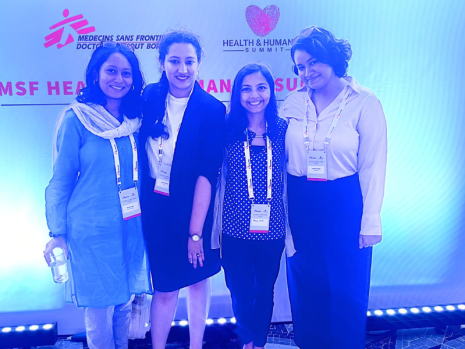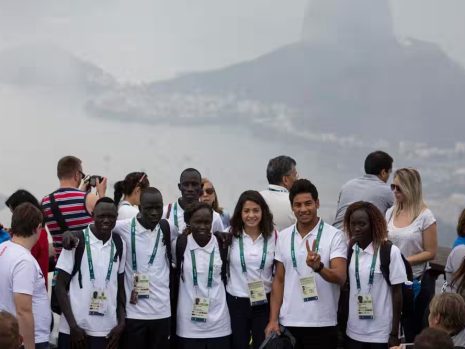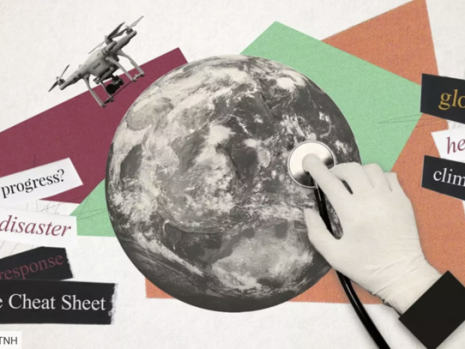PBB’s Training of Trainers, a hybrid “learn-teach-learn” co-creative program for displaced and migrant artists based in Berlin and coming from all around the world, kickstarted in February 2023. In the sixth session of the ToT on 21st March, we completed our third & last module of the online stage of the program to inspire participants in their respective creative journeys tuned into arts and education projects.
Introduction
The last session of ToT’s first stage took place on the 21st March. In this session, we were joined by Johanna Sell, a peace educator with expertise on nonviolent communication (NVC) and conflict transformation facilitation and coaching. She navigated us to explore our inner peace and inner conflict channels through a powerful self-reflection tool.
We talked about inner peace as the ability to tap into our plurality of voices within to make choices, to listen to one’s intuitive and authentic voice, but also recognize inner peace in relation to the outside world. We asked ourselves: how do power relations, structures of oppression and inequalities impact our internal peace?
Peace and Temporality
Johanna started her workshop by highlighting the multidimensional nature of peace. There is no single definition of peace in the scientific literature and because it is very much connected to the self, peace is very different for everyone. The session, thus, started with participants sharing what inner peace means to them.
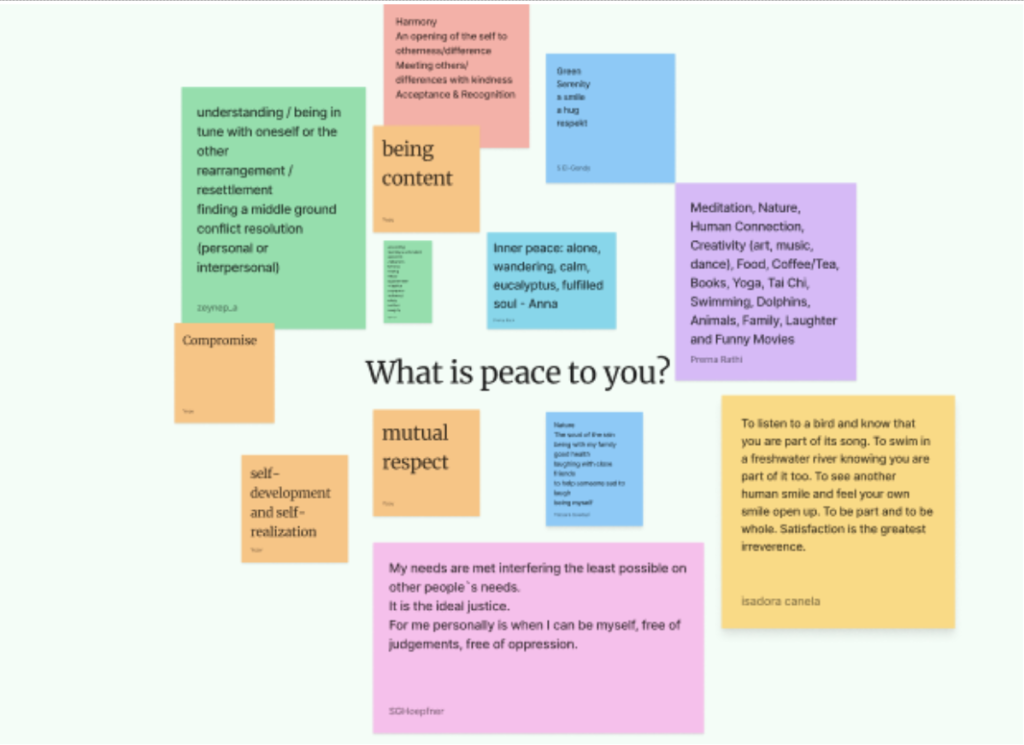
“We are talking about entangled images, so we are interested in narratives between different art works. We have to invest in the future to develop these kinds of narratives. It is something very important also in education, to connect things together. I compare it with what a curator does, when he or she is curating an exhibition. To tell a story that tells something to the audience” – Ernst (facilitator)
How do cultures interact – What shapes their encounters and relations?
Against a static or isolated understanding of culture, typical for instance within nationalist ideologies, which denies interrelations and exchanges between different cultures, EVC project reflects on the entanglements of diverse cultures from different parts of the world. It aims to understand the spectrum of approaches to culture and the encounters between them.
Talking about the entanglement of images, or intercultural dialogue, Ernst developed a spectrum to name the different ways in which cultures can interact or be brought together.
“For me, two things are important. Peace connected to power: the more in power I feel, the more peaceful I can be about myself right now. Another thing is temporality, somehow, we think about peace as only here and now, all these questions: do I feel peace now? But to me it is very connected with my idea of the future, and like many concepts such as hope, or others, there are from today, building a bridge into tomorrow. And depending on how empowered I feel today about being able to resolve conflict, or being able to resist oppression tomorrow, it will impact my feeling of peace today. And also based on my experience in the past. Have I been able to do these things in the past? Have I felt empowered in the past? And it’s also not a linear timeline, it goes beyond here and now, and being this individual for me. At least that’s how I conceptualize it at this point in my journey.” – Oksana (participant artist)
This temporal aspect of peace, and its relationship with the past, present and future, is opposed, as Oksana says, to a static vision of peace. As argued by Johanna, we often think of peace as a state, or as a goal to be achieved, however, peace is more of a process, and there is always an action to be done to support peace.
For a very long time, peace was understood negatively, as the absence of violence or oppression and a shift in the peace building field has occurred:
“Now, we think of peace as a process to transform all those non-direct or non-physical violence that exist in our societies, in terms of overcoming the discriminations, the systemic violence and so forth.” – Johanna (facilitator)
Listening to the plurality of our inner voices
In the second part of the workshop, we moved to the Inner Team exercise, developed originally by Schulz von Thun, which is a metaphor to understand and visualize our inner plurality (voices, values, needs, opinions etc.). The aims of this exercise are – to identify and listen to each inner voice/inner part within ourselves, to understand the message (intention) of that voice, to manage and unite these voices in order to be able to get clarity, authenticity and to act appropriately.
Some of the typical roles assumed by our inner voices is shown in the image:
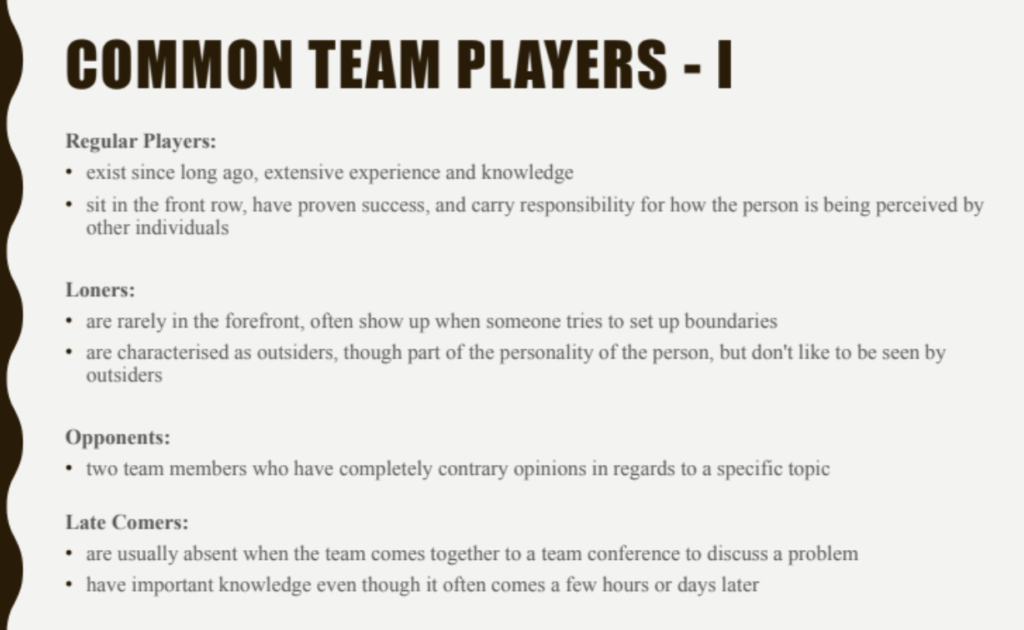
What are the needs that these voices are trying to make us meet? How can we act and take those into account? The exercise prompted each of us to think of a difficult decision we had to take, and to identify the voices that were making us so ambivalent about the decision, the arguments, concerns, blame or excitement they were triggering for us. The aim of this exercise is to understand one’s own inner voices, but also where they are coming from, what they are trying to tell us, in order to make authentic decisions attuned with our needs.
Power critical approaches
However, as pointed by Oksana, some voices and choices we make are deeply influenced by social norms and power structures:
“Based on my experience with this method and others, there is a similar method from Augusto Boal, rainbow of desire […] for me there is another character in this exercise and it’s the one who decides, the one who makes decisions about which voice to give priority to. And the more I’ve been practicing these methodologies and these kinds of approaches, they are different kinds of blueprint of facilitation techniques right, in a group or inside your own community, but a facilitator can also be biased, can have a patriarchal thinking or a colonial thinking or a capitalist mindset. […] This inner team of the person, if you look at it as a team on a ring, on a boxing ring, this team has support, or cheering from outside. And our contexts in which we live in, reinforce or encourage some voices more than others, and that’s why some voices may be louder, and it’s easier for us to sway towards them. So how would you integrate this kind of approach, basically a power sensitive approach, or critical approach to a moderation?” – Oksana (participant artist)
Johanna responded on how we need to reflect about the system that makes us even simply hear voices. Some voices we can’t even hear because socially, they are made to not even exist. Working towards becoming aware of power structures and systems at the root of hierarchies is the only way to start critically looking at our inner voices, and how our perceptions, values, judgements and emotions are impacted by these power structures.
It is also, as highlighted by Johanna, about empowering the counter normative, or disobedient voices:
“This tool is there for our own wellbeing, and if I realize that there is a voice within me that I always choose to ignore because of society or whatever, that will affect my wellbeing, and my authentic presence in the world. How can I empower that one voice?” – Johanna (facilitator)
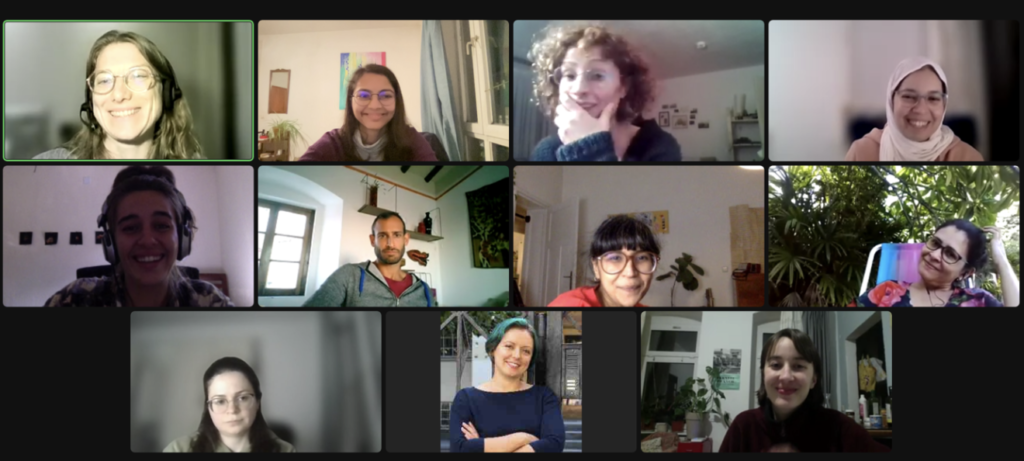
The second step of the exercise consisted of each participant in pairs presenting their difficult decision and their inner voices to one another, helping each other to gain clarity and understand the needs that these voices are communicating, as well as what influences them. This dialogue and exercise provoked reflections from the participants, highlighting the deep connection between our inner peace with the cultural and social contexts around us.
“I think all these voices, they are strongly connected to how we were brought up, how we grew up, they are also very social. Something very social is also very personal, and we already make a lot of things inherent, like we think “my world view is like that”, but sometimes, cognitive dissonance comes from a place where these voices are so inherent that you don’t even know where they are coming from, you feel them, you can’t name them, they are so deep.. So this conflict one can even think in a broader context, maybe.” – Zeynep (participant artist)
It also had a transformative power by allowing participants to open their inner dialogue to the other, in a safe space.
“Our listener, and the kind of gaze and perspective they bring can also be transformative. […] Part of this exercise shows the importance of this interdependence, the importance of a dialogue with this other person who maybe has more attention or more love to some parts of us or some voices in us than we do, for me it’s a really beautiful thought. […] We cannot do it alone, and we need this other perspective to break out of our familiar patterns and internal dialogues.” – Oksana (participant artist)
